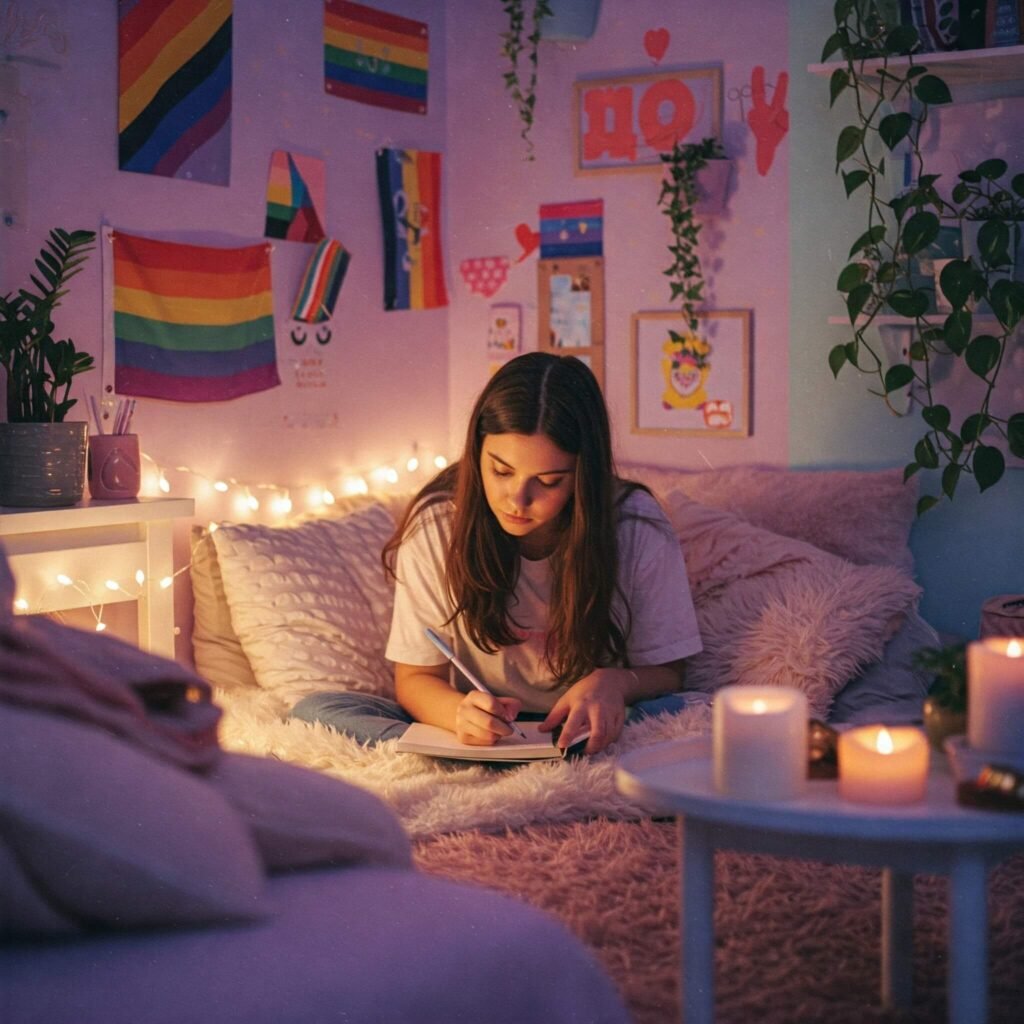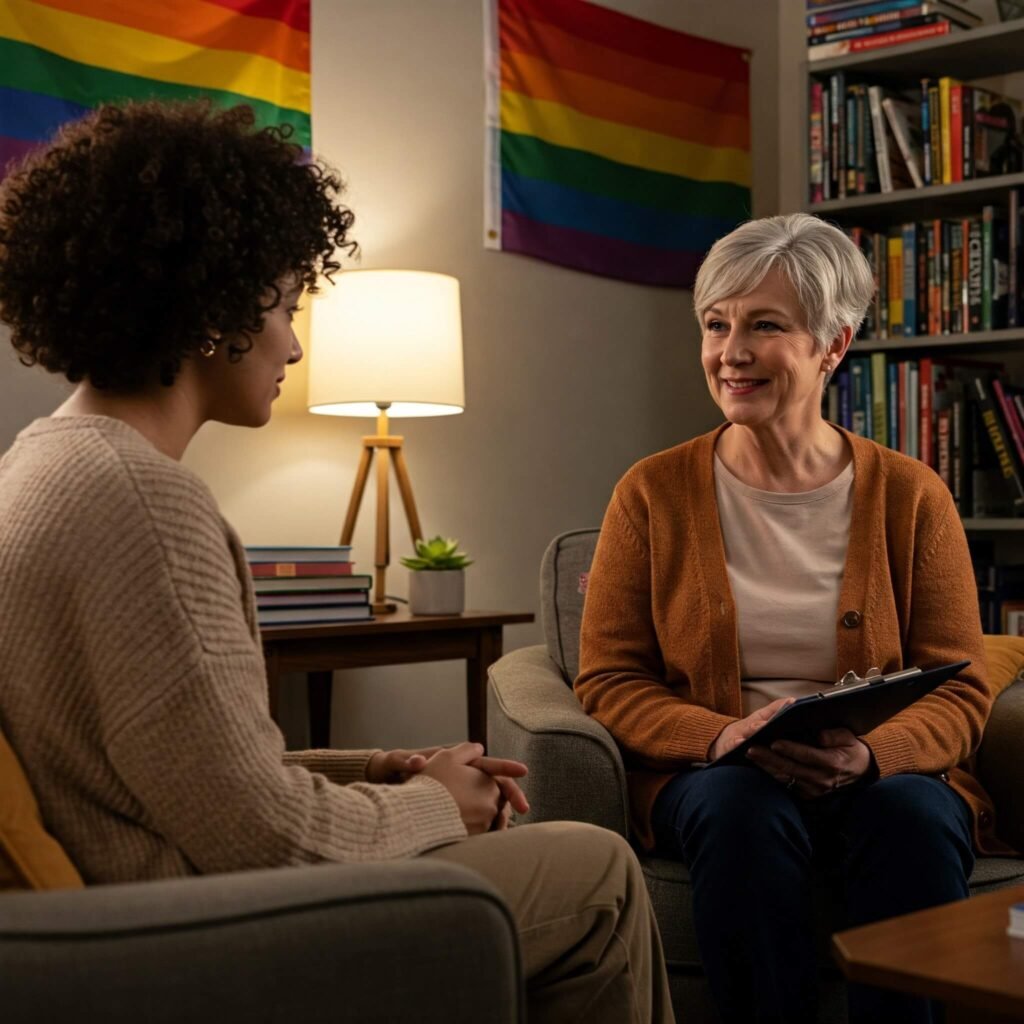Coping with anxiety as an LGBTQ+ person can feel overwhelming, especially when societal pressures, discrimination, or personal challenges amplify stress. For instance, anxiety is prevalent in the LGBTQ+ community, with studies showing that 30-60% of LGBTQ+ individuals experience mental health challenges due to stigma and rejection (NAMI). Therefore, this blog post explores practical, actionable strategies to manage anxiety, offering insights tailored to the unique experiences of LGBTQ+ individuals. Moreover, from mindfulness techniques to building a supportive community, these tips are designed to help you thrive.
Why Anxiety Hits Harder for LGBTQ+ Individuals
To begin with, LGBTQ+ individuals often face unique stressors that intensify anxiety. For example, these may include discrimination, family rejection, or internalized stigma. According to the Trevor Project, 60% of LGBTQ+ youth reported anxiety due to societal pressures. Consequently, understanding these triggers is the first step to coping with anxiety as an LGBTQ+ person.
Common Anxiety Triggers in the LGBTQ+ Community
- Discrimination and Microaggressions: Facing prejudice in workplaces or public spaces.
- Family Rejection: Strained relationships with loved ones after coming out.
- Internalized Stigma: Struggling with self-acceptance due to societal norms.
- Lack of Support: Feeling isolated without a safe community.

7 Strategies for Coping with Anxiety as an LGBTQ+ Person
In addition, here are seven practical, research-backed strategies to help you manage anxiety and build resilience. Specifically, these tips are tailored to the LGBTQ+ experience, with real-world examples to inspire action.
1. Practice Mindfulness and Grounding Techniques
Firstly, mindfulness can reduce anxiety by anchoring you in the present moment. In fact, a 2020 study found that mindfulness-based interventions lowered anxiety levels by 20% in marginalized groups (PubMed). Thus, incorporating mindfulness is a powerful tool for coping with anxiety as an LGBTQ+ person.
How to Start:
- Try a 5-minute breathing exercise: Inhale for 4 seconds utterance, hold for 4, exhale for 6.
- Use apps like Calm or Headspace, which offer LGBTQ+-inclusive meditations.
- Ground yourself by naming 5 things you see, 4 you feel, 3 you hear, 2 you smell, and 1 you taste.
Example: For instance, Alex, a nonbinary individual, uses a daily 10-minute meditation to cope with anxiety triggered by workplace misgendering. As a result, it helps them feel centered.
2. Build a Supportive LGBTQ+ Community
Furthermore, connection is key to coping with anxiety as an LGBTQ+ person. Specifically, surrounding yourself with affirming people reduces feelings of isolation. Therefore, finding a community is essential.
Actionable Steps:
- Join local or online LGBTQ+ support groups via PFLAG or The Trevor Project.
- Attend pride events or virtual meetups to connect with others.
- Follow LGBTQ+ creators on social media for daily inspiration.
Example: For example, Jamie, a trans woman, found solace in a local queer book club. Consequently, she made friends who validated her experiences.

3. Set Boundaries to Protect Your Mental Health
Moreover, setting boundaries with unsupportive people or environments is crucial for managing anxiety. In other words, protecting your mental space can significantly reduce stress.
Tips for Setting Boundaries:
- Politely decline conversations that feel unsafe or triggering.
- Limit time with family members who don’t respect your identity.
- Use phrases like, “I’m not comfortable discussing this right now.”
Example: To illustrate, Sam, a gay man, reduced anxiety by limiting contact with a critical relative. As a result, he could focus on affirming relationships.
4. Engage in Creative Outlets
Additionally, creative expression, like journaling or art, can be a powerful way to process anxiety. Specifically, it allows you to externalize complex emotions.
Ideas to Try:
- Write about your feelings in a private journal.
- Create art inspired by your identity, like pride-themed sketches.
- Join a queer-friendly art class or writing group.
Example: For instance, Riley, a bisexual teen, paints abstract pieces to express emotions they can’t verbalize. Consequently, this eases their anxiety.
5. Seek LGBTQ+-Affirming Therapy
Furthermore, therapy with a culturally competent provider can make a huge difference. In fact, professional support is often vital for coping with anxiety as an LGBTQ+ person.
How to Find Help:
- Search for therapists via Psychology Today with filters for LGBTQ+ expertise.
- Explore affordable options like Open Path Collective.
- Look for therapists who understand intersectional identities.
Example: To demonstrate, Taylor, a queer person of color, found an affirming therapist who helped them navigate anxiety tied to both racism and homophobia. As a result, they felt more empowered.

6. Practice Self-Compassion
In addition, self-compassion involves treating yourself with kindness, especially during tough moments. Therefore, it’s a vital strategy for managing anxiety.
Self-Compassion Exercises:
- Write a letter to yourself as you would to a friend.
- Repeat affirmations like, “I am enough, and my identity is valid.”
- Forgive yourself for moments of self-doubt.
Example: For example, Casey, a lesbian, uses daily affirmations to combat internalized stigma. Consequently, this boosts their confidence.
7. Advocate for Yourself
Finally, advocacy can empower you to take control of your environment, reducing anxiety triggers. In other words, standing up for your needs fosters resilience.
Ways to Advocate:
- Request inclusive policies at work or school.
- Educate others about your identity respectfully.
- Support LGBTQ+ causes through volunteering.
Example: To illustrate, Jordan, a pansexual activist, reduced anxiety by leading a workplace diversity training. As a result, they created a safer space.
When to Seek Professional Help
However, if anxiety feels unmanageable, it’s okay to seek help. For instance, signs you may need professional support include:
- Persistent feelings of overwhelm or panic.
- Difficulty sleeping or concentrating.
- Withdrawal from friends or activities.
Therefore, contact a crisis line like The Trevor Project (1-866-488-7386) or Trans Lifeline (1-877-565-8860) for immediate support.
Final Thoughts: You Are Not Alone
In conclusion, coping with anxiety as an LGBTQ+ person is challenging, but you have the strength to thrive. Specifically, by practicing mindfulness, building community, and seeking support, you can create a life that feels authentic and fulfilling. Moreover, remember that your identity is valid, and you deserve to live without fear or shame.
Outbound links :





























